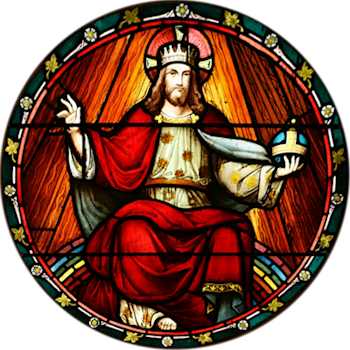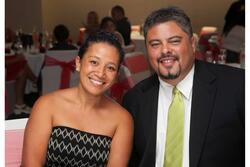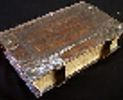
Today we focus on Christ as our King. A feast that many modern churches have neglected, but that can be tremendously meaningful.
Observed on the last Sunday before Advent since ancient times, this is a day on which the Church reflects on the fact that Jesus Christ is our King. Soon in Advent we will be celebrating both the birth of the eternal King and looking to Jesus as our returning King. King Jesus will not be a mere figurehead as most of today's royalty, but an absolute monarch. As equally divine and human, He will not make mistakes, we know He will rule with compassion, and mercy. Christians look forward to His return, but we in the west, may find having an absolute sovereign will take some adjustment.
We are living in the end times, his return is close and today is the time to think about the idea of Jesus as an absolute sovereign. So reflect through the readings on him as our King, not merely a figure on a cross or a figurehead of a state or religion, but as the true son of God, the absolute sovereign of the world.
Aotearoa Sunday

It is also Aotearoa Sunday for New Zealand. The day of celebration, prayer and thanksgiving for the Bishop of Aotearoa, the head of the Maori Church in New Zealand. The vision of the 1st CMS Missionaries in New Zealand was to bring the gospel to Maori and form a Maori church. Plans were that Maori would spread the gospel among their own people and the Church be self-supporting within that culture. Henry Williams and his wife, heading up the CMS Mission, realized the importance of bringing the gospel to Maori in their heart language and within their own cultural framework. They came up with a written version of the language and started teaching and translating, from there the Maori Church began. The gospel spread by Maori to Maori, running far ahead of the missionaries who followed in its wake.
The solution achieved is the 3 Tikanga Church we have today, its formation helped by the appointment of a Maori Bishop of the Maori Church throughout Aotearoa. A man who would understand and appreciate both cultures, work in both and act as a mediator when required. We can praise God indeed for the genius and talent of the 1st Maori Bishop Frederick Augustus Bennett, he and those that followed in his footsteps (including one of his sons), have led to a thriving Maori church. Our current Bishop of Aotearoa is Archbishop Donald Tamihere based in Gisborne.
 Welcome
Welcome Calendar
Calendar Today's Word
Today's Word Lauds
Lauds Terce
Terce Sext
Sext None
None Vespers
Vespers Compline
Compline Matins
Matins